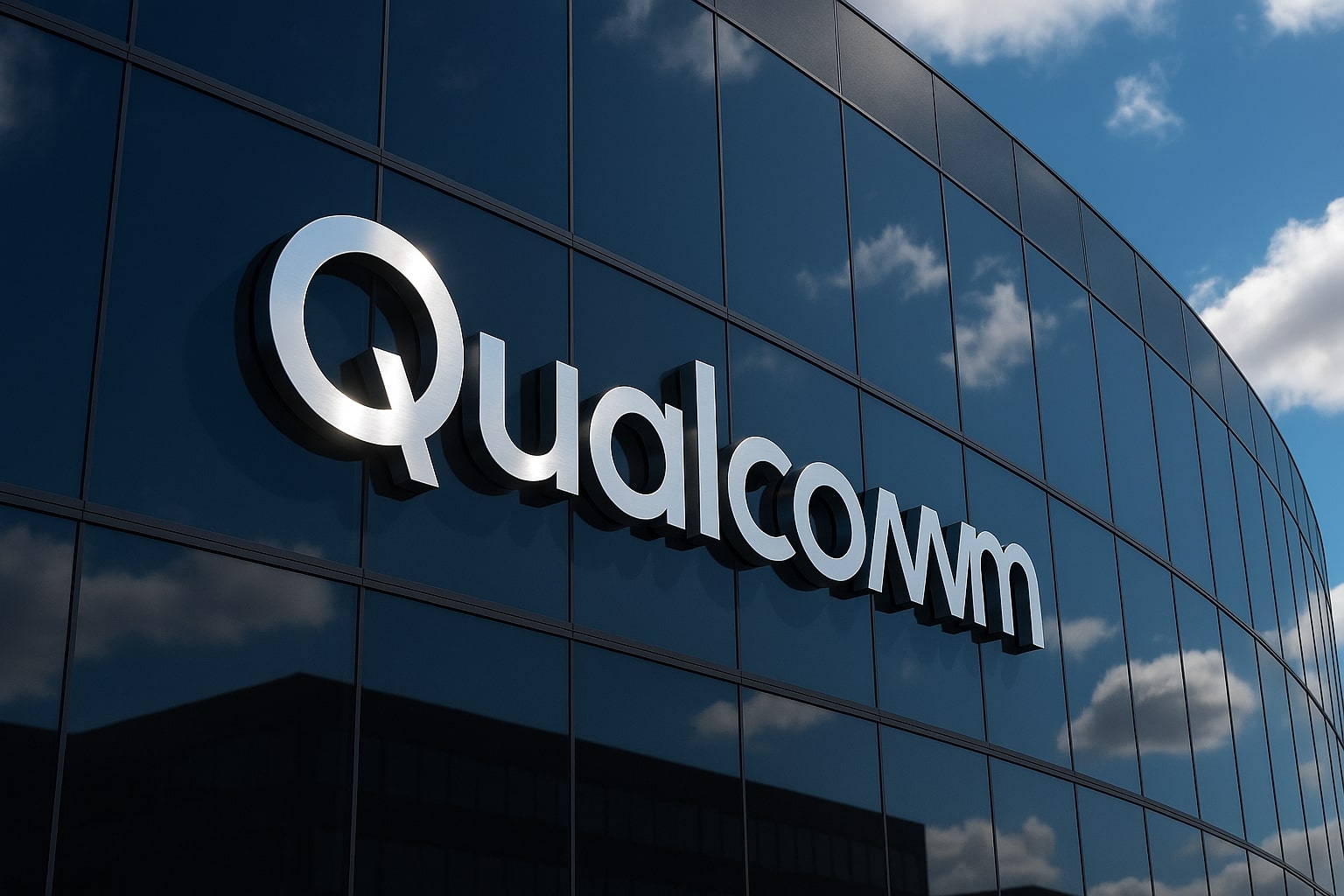
JEPQ ETF (NASDAQ:JEPQ) Climbs Toward $59 as 10.3% Yield and $31B AUM Cement Its Status as JPMorgan’s Income Powerhouse
JEPQ trades near record highs at $58.77 (+1.84%), offering a 10.32% annual yield and $5.96 dividend rate, supported by $31.34B in assets and $440M monthly inflows | That's TradingNEWS
JPMorgan Nasdaq Equity Premium Income JEPQ ETF (NASDAQ:JEPQ) Nears $59 as 10.3% Yield, $31.3B AUM, and Rising Volatility Drive Strong Momentum
The JPMorgan Nasdaq Equity Premium Income ETF (NASDAQ:JEPQ) is holding near record territory, trading around $58.77 (+1.84%), just below its 52-week high of $59.42, after a surge in institutional demand for income-generating equity funds. JEPQ’s 10.32% yield, backed by an annualized dividend rate of $5.96, remains among the highest in the Nasdaq 100 income ETF segment. The fund’s assets under management reached $31.34 billion, solidifying its dominance in the covered-call ETF market and extending JPMorgan’s footprint in premium income strategies.
Over the last year, JEPQ’s total return has climbed 20.8%, outpacing many of its peers such as QYLD and GPIQ, which offer slightly higher yields but less price stability. The ETF’s steady income profile, strong liquidity, and performance resilience have positioned it as a go-to product for investors balancing tech exposure and cash flow stability in an environment of declining Treasury yields and moderating inflation expectations.
Yield Mechanics and Volatility Advantage
JEPQ’s income engine is built on actively managed Nasdaq 100 equities combined with equity-linked notes (ELNs), which sell call options on the benchmark index. The strategy captures a majority of the index’s upside while monetizing volatility through premiums. With the CBOE Nasdaq Volatility Index rising above 23.4, JEPQ’s call premium income has expanded, boosting its monthly distribution to $0.4755 in the latest declaration.
The current 10.32% yield represents one of the most attractive risk-adjusted payouts among covered-call ETFs, outpacing JEPI (7.9%) and competing directly with QYLD (11.1%). However, unlike QYLD, which fully caps upside potential, JEPQ’s strategy leaves room for moderate appreciation by adjusting strike levels on its call positions. This hybrid approach has enabled it to maintain both capital appreciation and income stability even through volatile tech market phases.
Volatility remains JEPQ’s ally — when market turbulence rises, so do option premiums, translating directly into higher distributions. If volatility remains elevated heading into Q1 2026, the fund’s monthly yield could climb toward 11–12%, providing investors an enhanced income cushion against equity market fluctuations.
Portfolio Composition: Balancing Tech Exposure with Active Risk Control
JEPQ’s portfolio centers on large-cap Nasdaq names — including Microsoft (MSFT), Apple (AAPL), NVIDIA (NVDA), Amazon (AMZN), and Meta Platforms (META) — which collectively make up roughly 55% of total holdings. Yet unlike passive ETFs such as QQQ, JEPQ’s active management allows tactical rebalancing toward lower-volatility positions when tech valuations become stretched.
The fund’s active equity sleeve (80%) is complemented by ELNs (20%), which JPMorgan continuously refreshes to optimize option premiums. This active rotation differentiates JEPQ from static covered-call ETFs, giving it flexibility to adapt to shifting market volatility regimes. The strategy also results in smoother drawdowns — during the April correction in 2025, when the Nasdaq 100 declined 7.8%, JEPQ fell only 5.1%, while still paying investors $0.45 per share in monthly income.
Performance and Risk Profile: Smooth Returns, Tax Nuances
Since inception, JEPQ has delivered an average annual return of 16.9%, versus 22.5% for the Nasdaq 100, a trade-off that aligns with its covered-call structure. The ETF’s one-year return of 20.8%, coupled with lower standard deviation (around 12% vs. 18% for QQQ), underlines its appeal for income-oriented investors seeking volatility mitigation.
However, investors must weigh tax inefficiency. Because much of JEPQ’s payout originates from option premiums, its distributions are taxed as ordinary income rather than qualified dividends. For that reason, it’s most efficient in tax-sheltered accounts such as IRAs or 401(k)s. In taxable portfolios, effective post-tax yield may fall to 6–7% depending on jurisdiction, though reinvestment can offset part of that impact.
Comparative Analysis: JEPQ vs QYLD, QQQI, and JEPI
Against its main peers, JEPQ maintains a superior balance between growth and yield.
-
JEPQ: 10.32% yield | AUM $31.34B | Avg monthly div. $0.4755 | Expense ratio 0.35%
-
QYLD: 11.1% yield | AUM $8.6B | Expense ratio 0.60% | Lower total return
-
JEPI: 7.9% yield | AUM $33.2B | S&P 500-based | Lower volatility
-
QQQI (Global X): 10.5% yield | AUM $4.7B | Higher turnover and capped upside
JEPQ outperformed QYLD by 1.6x in total return over the last six months due to a more flexible option overlay and superior stock selection. During tech’s 2025 rally, QYLD’s performance was capped by short call exposure, while JEPQ retained partial upside — a design that allowed it to climb above $58.50 while delivering consistent income.
Market Dynamics: Why Income ETFs Are Leading Flows
As rate cuts loom and bond yields moderate, investors have rotated back into equity income ETFs like JEPQ. October saw $1.1 billion in net inflows across JPMorgan’s income ETF suite, led by JEPQ’s $440 million inflow, reflecting renewed confidence in its resilience against rising tech volatility.
The broader premium-income ETF segment now manages over $150 billion, with JPMorgan controlling nearly 40% of market share through JEPI and JEPQ combined. This structural demand for yield-based equity exposure highlights a lasting investor preference for monthly cash flow paired with equity participation rather than pure growth chasing
Read More
-
Qualcomm Stock Price Forecast - Analysts Eye $230 Target to QCOM Stock on AI Edge Expansion
10.11.2025 · TradingNEWS ArchiveStocks
-
XRPI & XRPR ETFs Rally Over 8% as XRP Trades Above $2.53 — DTCC Listings Ignite Institutional XRP ETF Boom
10.11.2025 · TradingNEWS ArchiveCrypto
-
Natural Gas Price (NG=F) Surges Above $4.40 as Record LNG Exports and Tight Storage Ignite Bullish Winter Rally
10.11.2025 · TradingNEWS ArchiveCommodities
-
Stock Market Today: NASDAQ:COMP Soars 1.56% as Shutdown Progress Ignites Rally — S&P 500:SPX +0.89%, NVDA, TSLA, GOOGL Lead Gains
10.11.2025 · TradingNEWS ArchiveMarkets
-
USD/JPY Price Forecast - Dollar/Yen Steadies Near 154.00 as U.S. Fiscal Optimism Offsets BoJ Policy Caution
10.11.2025 · TradingNEWS ArchiveForex
Volatility, Rate Cycles, and Forward Outlook
JEPQ’s performance correlates inversely with Treasury yields — as 10-year yields fell from 4.68% to 4.31%, JEPQ gained 3.1% in November. Lower yields reduce the opportunity cost of holding income ETFs and increase demand for premium income structures.
If volatility persists above 20, option premiums are projected to rise 8–10%, supporting dividend growth through early 2026. Conversely, if volatility declines sharply, monthly yields may normalize toward 8.5–9%, though capital stability should remain intact given JPMorgan’s conservative call writing and large-cap bias.
Investor Suitability: The Middle Ground Between Growth and Income
JEPQ is not designed for aggressive tech bulls chasing capital gains nor for risk-averse investors seeking capital preservation. It serves investors positioned between the two extremes — those wanting monthly income with controlled equity exposure. Retirees, yield-focused portfolios, and reinvestment-based strategies benefit most from JEPQ’s compounding potential.
The fund’s ability to maintain price stability between $56–$59 during turbulent sessions underscores its low-beta behavior relative to the Nasdaq. With strong liquidity (avg. daily volume 6.2 million shares) and a tight 0.02% bid-ask spread, it remains one of the most institutionally efficient covered-call ETFs available.
TradingNews Verdict: BUY NASDAQ:JEPQ — Target $62–$65 in 2026
After consolidating performance data, volatility impact, yield structure, and comparative positioning, JEPQ (NASDAQ:JEPQ) stands as a BUY heading into 2026. The ETF combines consistent monthly income, disciplined volatility management, and active exposure to the Nasdaq 100’s dominant growth engines.
Key drivers include:
-
10.32% annual yield with room for further expansion amid higher volatility
-
$31.34B AUM, confirming institutional adoption
-
20.8% 1-year total return vs peers averaging 14–16%
-
Expense ratio: 0.35%, below sector average
-
Monthly distribution: $0.4755
-
Effective NAV correlation: >99%, ensuring price fairness
At $58.77, JEPQ trades near resistance but maintains momentum supported by inflows and rising volatility premiums. A breakout above $59.50 could open a path toward $62–$65, implying a 12% upside alongside its 10% income yield.
Verdict: BUY NASDAQ:JEPQ — Reliable monthly income, low drawdown risk, and strong total return profile make it a core holding for balanced income portfolios heading into 2026



















